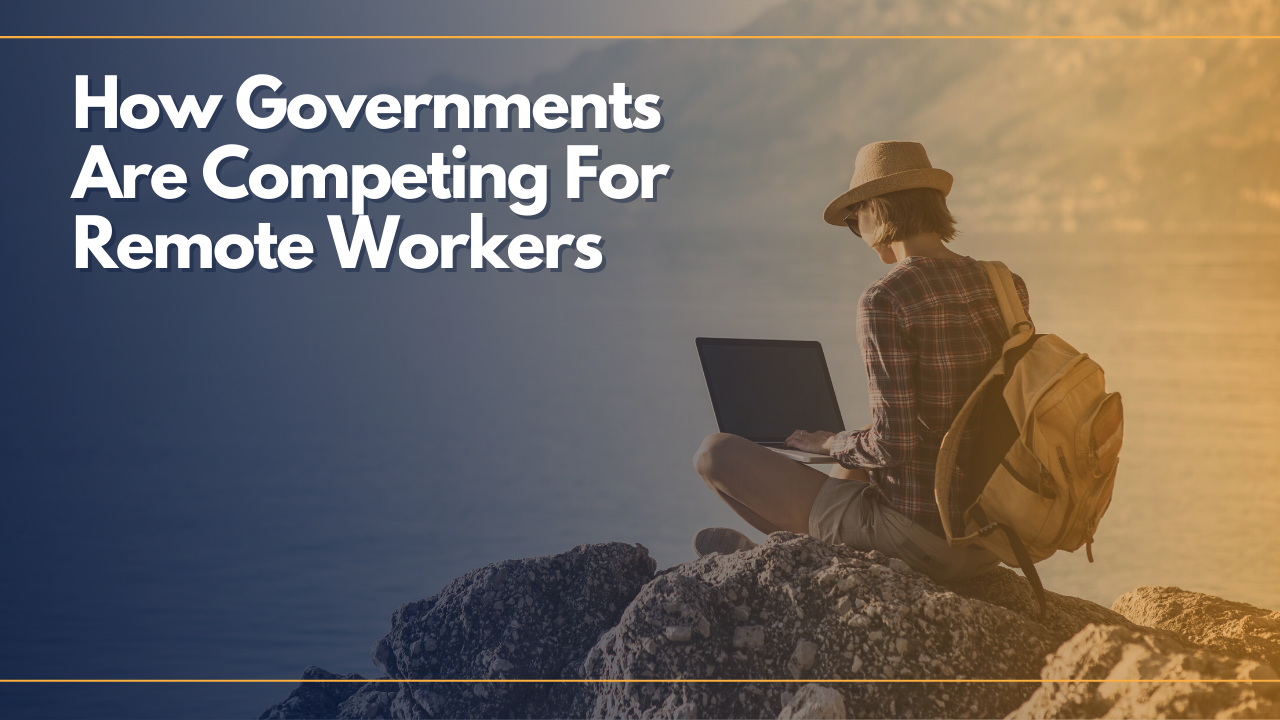- As a result of the ongoing pandemic, there is a growing segment of location independent remote workers who are relocating.
- Governments are strategizing and launching new incentives to attract these newly location-independent people and businesses.
- From Barbados to the Canary Islands, here’s what governments around the world are doing to take advantage of work-anywhere trends.
Covid-19 created the largest group of remote workers (teleworkers, telecommuters) ever. However, these remote workers often have quite different circumstances and options available to them. Their personality, role, position, policies, home, income, and skillsets impact how, when and where they can and do work.
Suggested Reading: What Does Working Remotely Mean?
At the end of 2020, work from home remained both popular and necessary. At the same time, large groups of people in certain countries were returning to a central office, or to a satellite office or coworking space, for part of the working week.
However, the longer that lockdowns continue to impact the globe and workers stay remote, the more some organizations are permanently allowing greater levels of remote work options.
As a result, there is a growing segment of location independent remote workers who are relocating temporarily or permanently into “intermediate density or even thinly populated areas that offer higher well-being and lower costs.”
According to a paper, “Exploring policy options on teleworking: Steering local economic and employment development in the time of remote work” by the OECD (Organization for Economic Co-operation and Development): “15% of people (in the UK) surveyed said they were considering moving as a result of life in lockdown, with a third (34%) stating they think differently about their home as a result of the COVID-19 outbreak, especially the importance of a garden and the need for more indoor space for homeworking (Nationwide, 2020[48]).”
In the US, “the AEI Housing Center has found that between May and August 2020, buyers have opted for homes in areas with 19% less density on average than the same period last year. Demand is up 74% in the least dense quintile of zip codes.”
“Combined with those who are moving regardless of remote work, near-term migration rates may be three to four times what they normally are.”
These changes will impact where investments are directed, how our cities, neighborhoods and rural communities develop, where people live, where people work, and more.
Although the ultimate scale of impact is difficult to determine, governments globally have been strategizing and launching new incentives and schemes for attracting and retaining these newly location-independent people and businesses.
Common Attraction and Retainment Government Strategies
1. Residency or visa schemes
2. Fiscal and financial incentives
3. Rezoning to incentivize a higher mix of residential and office space
4. Infrastructure investments such as high-speed bandwidth
5. Discounted or included workspace
6. Discounted living space
In addition, “regions and local communities” are taking “the opportunity to foster the diversification of their industrial base, increasing resilience to digitalization and its associated phenomena, including teleworking.”
Where are governments incentivizing and attracting remote workers?
There are dozens of examples of governments incentivizing location independent workers to move temporarily or permanently.
Most of these policies appear to be put into place first in locations heavily reliant on tourism, those that experienced a long term brain drain, a large industry or employer loss, or a mixture of them.
In some of these locations, the incentives are intended to attract enough independent remote workers to then bring entire businesses, larger teams, and other investments. Other places are looking to bridge the difficult months / years of limited tourism by opening their borders to location independent remote workers.
There are many other programs too. Here are just a few examples:
- Barbados (12 month Welcome Stamp Program)
- Bermuda (Residency Certificate Policy which can be valid for up to a year)
- Canary Islands ($500k to attract home-workers / remote workers. Goal to attract 30k remote workers.)
- Chile (Start Up Chile offering one year visas for business startups)
- Estonia (E-residency and Digital Nomad Visa)
- Georgia (6 – 12 month visa for Digital Nomad / Remote Workers)
- Greece (50% Exemption on Income)
- Iceland (6 month remote work visa)
- Savannah, GA, USA (Payment to move and work there)
- Rural and suburban communities globally
- Tulsa, Oklahoma, USA (Tulsa Remote – Monetary and workspace benefits)
- Vermont, USA (Remote Worker Grant Program)
Some of these programs have been around for years while a significant number of new programs have been launched in 2020 and expected to be launched in the future.
It is unclear what the actual impact and total draw of these programs will be for the long run, however, it is clear that some governments are becoming more agile and willing to remove barriers and even incentivize more people living, working, and spending money in their area.I want to hear from you! Contact me to chat about how much of an impact you see location-independent remote working having on our cities, housing, workplaces, and even the governments that are trying to attract them.


 Dr. Gleb Tsipursky – The Office Whisperer
Dr. Gleb Tsipursky – The Office Whisperer Nirit Cohen – WorkFutures
Nirit Cohen – WorkFutures Angela Howard – Culture Expert
Angela Howard – Culture Expert Drew Jones – Design & Innovation
Drew Jones – Design & Innovation Jonathan Price – CRE & Flex Expert
Jonathan Price – CRE & Flex Expert












